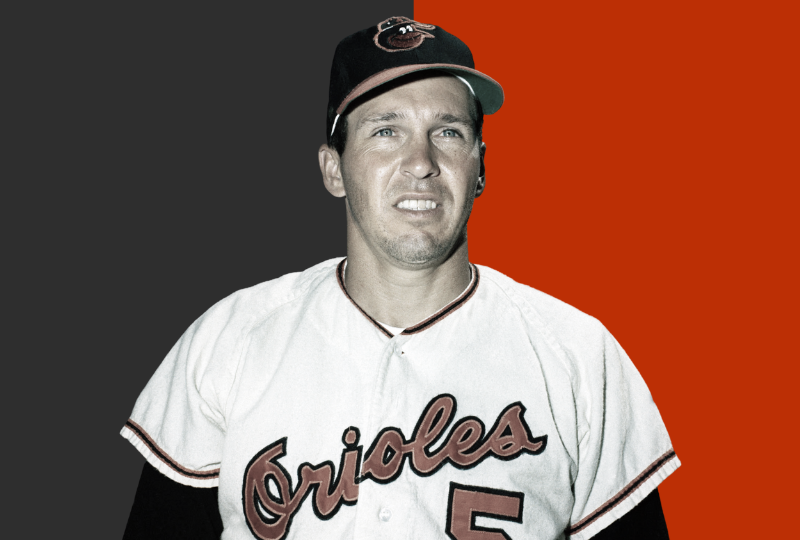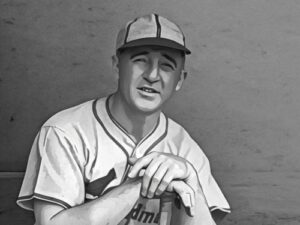“I loved playing the field. It sounds simple, but I enjoyed catching the ball.” — Brooks Robinson
“That man took 20 points off my career batting average.” — Al Kaline
The passing of Brooks Robinson at the age of 86 has robbed the world of one of the nicest people to ever live. Brooks was a treasure, first to his family and friends, and anyone who was lucky enough to meet him.
When you met Robinson it didn’t feel like meeting a superstar. Brooks was humble, uncomplicated, and grateful. He was grateful for every day he had on a baseball field, and grateful for every day he had on earth. His death is a blow to fans of the Baltimore Orioles, who lost the best ambassador their franchise ever had.
We rate Robinson among the 10 greatest third baseman in history. He might even deserve to rate higher, we wouldn’t argue. We know this much: we think Brooks Robinson is the best defensive infielder ever. Don’t talk about Ozzie and anyone else, because we saw Robinson, and he was more valuable with his glove than anyone else to play the infield.
Brooks Calbert Robinson Jr. was a senior at Little Rock High School in 1955 when a man named Lindsay Deal, a neighbor to the Robinson family, penned a letter to his old friend Paul Richards, who was general manager of the Orioles at the time. Deal had briefly been a teammate of Richards in the minor leagues. His letter praised Robinson, and suggested that Richards instruct his scouts to sign the young boy for the Orioles as soon as possible. Richards did, and Robinson played his first major league game seven months later. He never wore anything but a Baltimore uniform.
For two seasons, veteran third baseman George Kell mentored Robinson on the ways of playing the hot corner in the big leagues. The two men, separated by about 15 years, spoke the same language: both were from Arkansas. They were similar spirits: quiet, southern gentlemen with a burning fire in their belly to be the best. Kell taught Robinson how to navigate the big leagues and how to be a man in a sport filled with tough characters. But Kell didn’t have much to say to Robinson about fielding. “He was great at everything,” Kell said. “I didn’t have to teach him a thing.”
Left hand as strong as his right
Robinson was left-handed in everything other than hitting and throwing. He was a sure-handed athlete who had a penchant for rebounding in basketball. No matter what sport he played, Robinson could grab the ball like it was glued to his hands. “He had his glove on his strongest hand, unlike most fielders,” teammate and reliever Dick Hall said.
His reflexes were so good, his hands so quick, that Robinson overcame slow feet and an average throwing arm. “I could never throw the ball as hard as some of the other guys,” Robinson said, “but I could get rid of it fast.” In the 1970 World Series he robbed Lee May and Johnny Bench of several hits, most of them in jaw-dropping fashion. He also hit two home runs and had nine hits in five games. He was named Most Valuable Player of the World Series and became a national superstar. “We were beaten by Brooks Robinson,” Cincinnati manager Sparky Anderson said.
Best Defensive Infielders in Baseball History
According to defensive runs above average, Brooks Robinson is the second best defensive player in history, behind Ozzie Smith. The top ten third basemen according to that same statistic:
- Brooks Robinson +357
- Adrian Beltré +255
- Buddy Bell +206
- Scott Rolen +196
- Graig Nettles +182
- Robin Ventura +172
- Lee Tannehill +157
- Mike Schmidt +157
- Gary Gaetti +142
- Aurelio Rodríguez +130
Hard to argue with that list, even if you’re wary of advanced statistical methodology. Anyone who ever saw Buddy Bell play third knew he was very, very good. Same with the original ARod and Rolen, Ventura, and Beltré. Gaetti had an excellent defensive reputation, and Nettles was compared to Robinson favorably. No one remembers Tannehill, he played his first game before work began on the Panama Canal. I bet many people who never saw his career, and some who did, forget how great a third baseman Schmidt was. The same way Robinson revolutionized the position with his range, Schmidt elevated third base play through his ability to field bunts. Schmidt is the first guy who charged bunts aggressively and could field them barehanded and throw a bullet to first consistently. Every third baseman in baseball started to work on that play after Schmidt perfected it in the 1970s.
Robinson wasn’t particularly fast, so he liked to play fairly shallow to guard against the bunt. That makes it more amazing that he was able to react so well to line drives headed down the line. “A great arm always helps,” Robinson said, “but an alert third baseman throws sidearm and underhanded a lot.”






